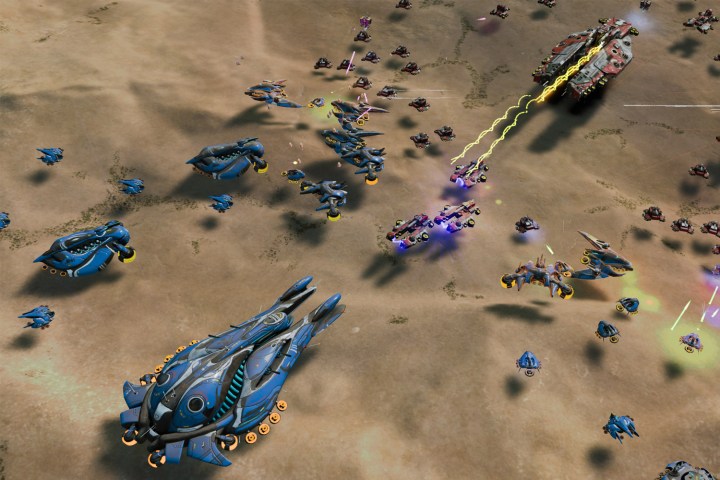
DirectX12 of course brings a lot of exciting performance benefits to games when developers choose to implement them, offering big gains in draw calls, better utilizing multi-core CPUs and more. However one of its biggest features is allowing graphics cards from different manufacturers to play together and when it comes to facing off Nvidia and AMD cards against a standard SLI set up, the mixed-card system wins every time.
Using the new Ashes of the Singularity beta benchmark v2.0 to test, Maximum PC, ArsTechnica, and Guru3D all found that AMD hardware saw a reasonable advantage over Nvidia hardware. A GTX 980 Ti performed better with a Fury X, than if you paired that same 980 Ti with a Titan X — though this was most obvious at highest settings. Lower down there was much less of a difference.
GamerNexus also found that a 390x and GTX 970 offered more than 21 percent higher frame rates than if you used two GTX 970s together.
If there was any weakness in AMD’s hardware line up however, it was in the amount of available video memory. In certain scenarios, adding a Titan X with its huge 12GB of memory, did aid in improving the smoothness of the demo.
All of this is only possible though, because of the way DirectX12 allows a system to offload different parts of the rendering to different GPUs. There are many different methods, including splitting up individual frames, but Ashes utilizes what’s known as Alternate Frame Rendering (AFR), whereby every other frame is sent to the secondary GPU to help out.
It is worth bearing in mind that Ashes of the Singularity does perform better on single AMD cards than Nvidia too, so we need to wait and see how DirectX12 is implemented in multiple titles before drawing a line under this — and we would expect Nvidia to come back strong with driver updates to combat this shortfall soon enough. However, it is impressive that AMD seems to have such an advantage utilizing new DX12 technology.
If enough developers support it, would you consider adding a second GPU from the other team to balance out your PC?



